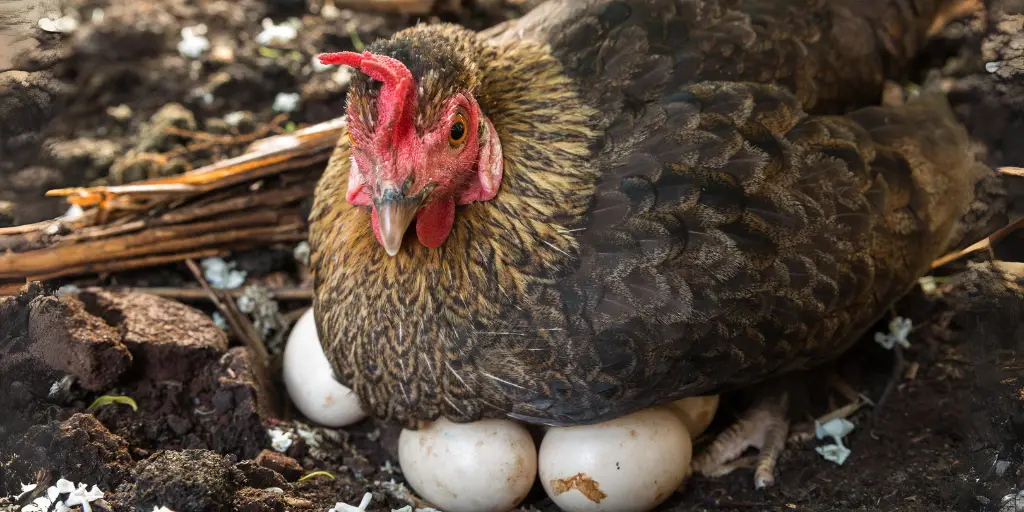Are you searching for the most broody chicken breeds? If yes, this list will help you to choose one.
If you want to raise chickens for breeding, naturally broodiness is most important.
Not only this, selecting the best to good broody hen breeds helps you to get better hatching rate and chicks caring.
Broodiness is mostly seen in non-hybrid pure line breeds, as compared to hybrids or sex-linked chickens. However, few hybrids are also broody ones.
What Is a Broody Chicken Breeds?
Broody chicken breeds are great for backyard farms. They want to sit on their eggs.
These broody hens hatch the eggs without help. No need for special equipment like incubators.
Broody hens care for baby chicks well. The chicks survive better than chicks raised by people if raised in a fenced environment.
Having broody hens means the farm can keep going. New chicks are born to replace older hens. The farmers don’t need to buy new chicks.
These broody chicken breeds are calm and friendly. Easy to take care of, even for new farmers.
Broody chickens are helpful. They give you chicks for free! You save money on equipment.
Also read: Definitive guide on brooding chickens
Best Broody Chicken Breeds
Here is a list of few best broody chicken breeds:
Brahmas

The Brahmas are one of the popular broody chicken breeds in America. It was developed in Shanghai, China.
The breed is big and has feathers on its legs. From the 1850s until 1930, it was the main meat chicken in the United States.
Some say the Brahma chicken is from India because it looks like the Chittagong chicken from Bengal.
Brahma chickens lay over 200 big brown eggs each year. The hens are broody mothers, but the chicks need to be watched carefully because of the heavy weight of hens.
Brahma chickens usually live for 5 to 8 years. With good care, some can live up to 10 years.
Poultry raisers love to raise Brahma chickens. It is gentle and can be used for both meat and eggs.
Silkies
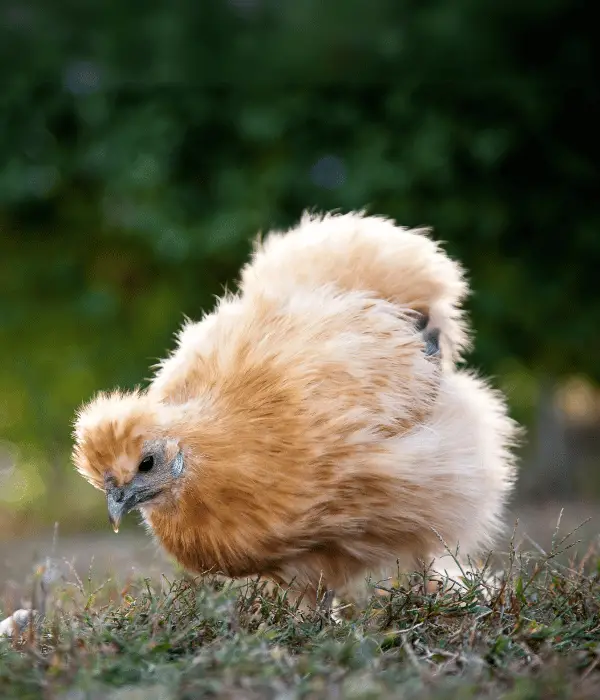
Silkie chickens have soft, fuzzy feathers. They first came from China a long time ago.
Marco Polo saw them when he explored Asia in the 1200s. An Italian expert on animals named Ulisse Aldrovandi wrote about Silkies in 1598.
Silkie hens love to sit on eggs and take care of baby chicks. They are one of the best broody chicken breeds because they are such good mothers.
A Silkie hen usually lays around 100 to 120 small, creamy-colored eggs each year. How many eggs they lay depends on things like their age, what they eat, and where they live.
Most Silkie chickens live for 7 to 9 years if they are cared for well. People all over the world love these sweet-nature, fluffy chickens with their unique looks.
However, they are best for raising in cold and dry climates because of their fuzzy and furry feathers all over the body.
Cochins

The Cochin chicken is a special bird with a long history. It comes from China. Later, it was brought to places like Europe and America in the 1800s.
This chicken has a big size and lots of feathers. The feathers cover its legs and feet too. At first, the Cochin chicken was bred for shows, not for egg-laying.
As for eggs, Cochin hens lay a medium number of eggs. They may lay two or three eggs per week. That means around 150 to 180 eggs in a year.
The eggs are medium-sized and brown in color. Cochin hens like to sit on eggs and hatch them. They are one of the best broody hens.
They will raise not just their own chicks, but also chicks of other birds. Cochin hens are caring and protective towards their young ones.
Cochin chickens can live for 8 to 10 years. This shows they are a hardy breed.
Orpingtons
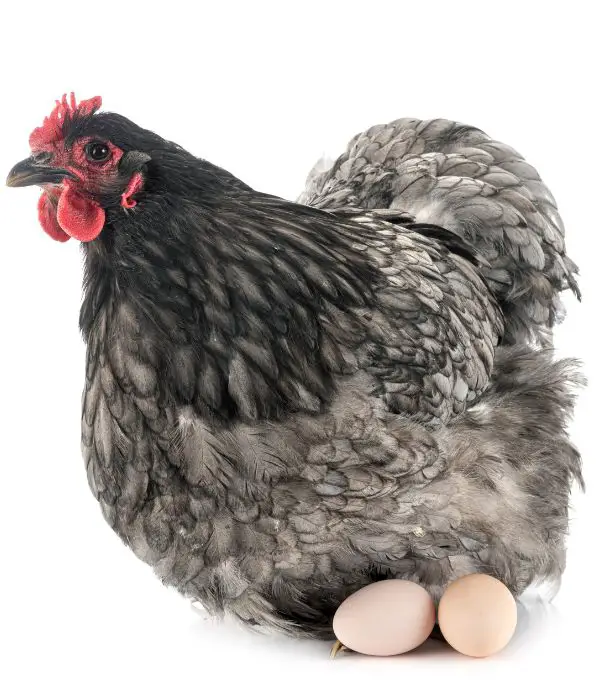
The Orpington chicken has a long and exciting story. This breed was first created in the late 1800s in Orpington, England.
A man named William Cook made it to be a chicken for both eggs and meat. But soon, it became a show chicken.
The first Orpington chickens were black. Cook bred different chickens, like Minorcas, Langshans, and Plymouth Rocks, to make a new kind of chicken that would look good in London.
Orpingtons lay around 175 to 200 medium or large light-brown eggs each year. They are very good broody hens and take great care of their baby chicks.
If you take good care of an Orpington chicken, it can live for 8 to 10 years. After being shown at Madison Square Gardens in 1895, the Orpington chicken became very popular.
Sussex
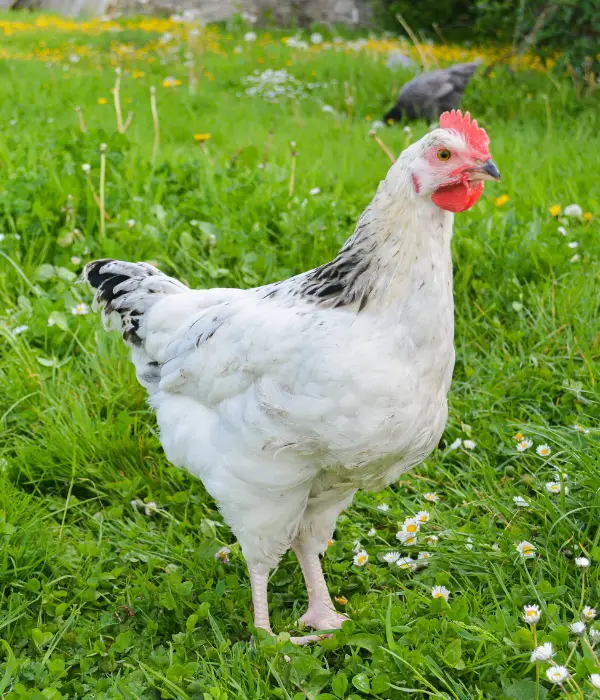
The Sussex chicken breed has an old story and a tough look. It came from the county of Sussex in England.
People think its roots go back to when the Romans invaded Britain around 43 A.D. They first showed the breed at a poultry show in 1845.
Since then, it has been known for being good for both meat and eggs. Sussex chickens are good at laying eggs, as they lay around 250 eggs per year.
These eggs are big. Each egg weighs about 60-65 grams. Sussex hens love to sit on their eggs and take care of their chicks.
They are known for being good mothers to their chicks. Sussex chickens live a long time. They usually live for 8-10 years if they get good care.
Sussex chickens can live in different climates and places.
Wyandottes
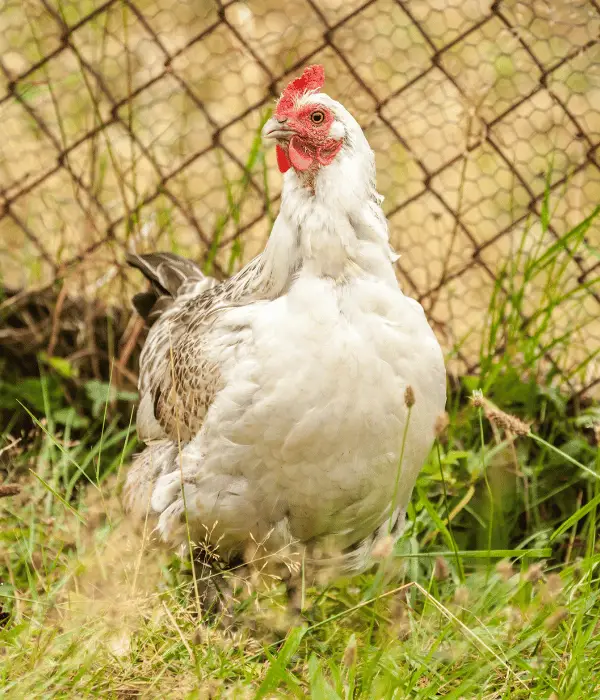
The Wyandotte chicken started in America in the 1870s. It got its name from the Wyandot people, who lived in North America.
At first, people called it the American Sebright. People made this breed to get both brown eggs and yellow meat.
The first type, the silver-laced Wyandotte, was recognized in the American Standard of Perfection in 1883.
Wyandotte hens are good at laying eggs. They usually lay around 200 big brown eggs each year.
They keep laying eggs in the winter too, but they might lay fewer eggs when they are molting.
As mothers, Wyandotte are one of the best broody chicken breeds. They keep their chicks warm and safe, and teach them foraging for food.
Wyandotte chickens can live for 6 to 12 years. This breed is good at adapting to different places.
Marans
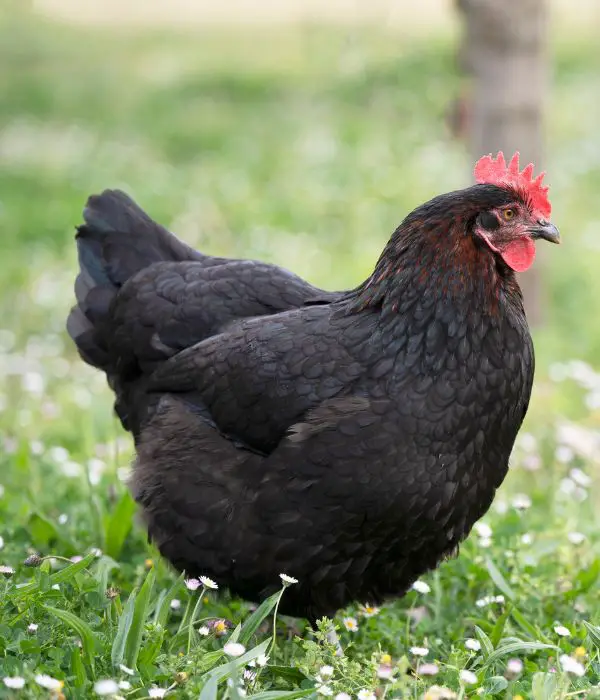
The Marans chicken is a breed that lays rich brown eggs. It comes from a small village in France called Marans, about 240 miles from Paris.
The breed was made by mixing local chickens with other chickens brought by ships. Marans chickens are good for meat and eggs.
Their eggs can have different shades of brown, from light to almost black. They lay around 150-200 eggs per year and start laying between 24 and 36 weeks old. Their eggs are medium to large sized.
Marans hens get broody, meaning they want to sit on eggs to hatch them. When they go broody, they make great moms.
They take good care of their chicks and teach them skills to survive. This breed lives a long time, around 7 years, and can live even longer with good care.
Faverolles
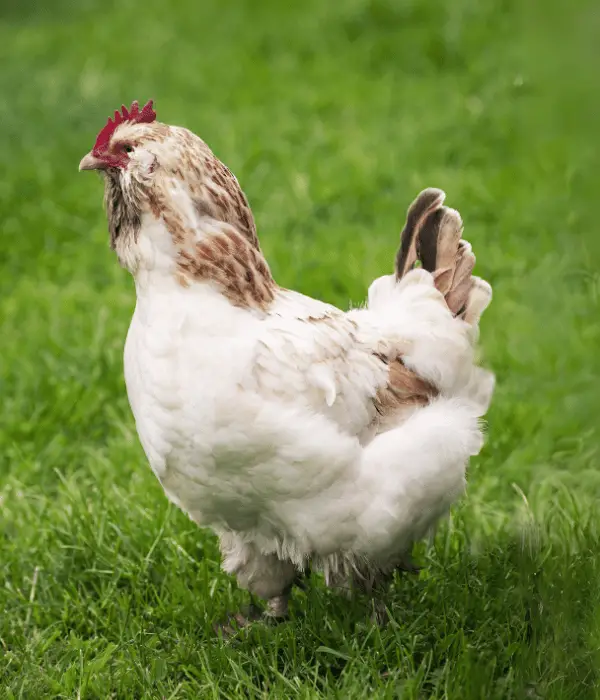
The Faverolles is a chicken breed from France. It was developed in the 1860s in the village of Faverolles. Some breeds like Dorking, Houdan, and Brahma were mixed to make it.
Faverolles chickens look fluffy with beards, muffs, feathered feet, and five toes on each foot instead of four.
Faverolle hens are good at laying eggs in winter. They lay medium-sized eggs that are light brown to pinkish in color.
A well-cared-for Faverolles hen can lay around 150-200 eggs per year.
Faverolles hens do not get broody very often. But sometimes they do, and they are good mothers who take good care of their chicks.
The Faverolles usually live for 5 to 7 years. They are a hardy breed and can handle cold weather well because of their thick feathers.
Dorkings
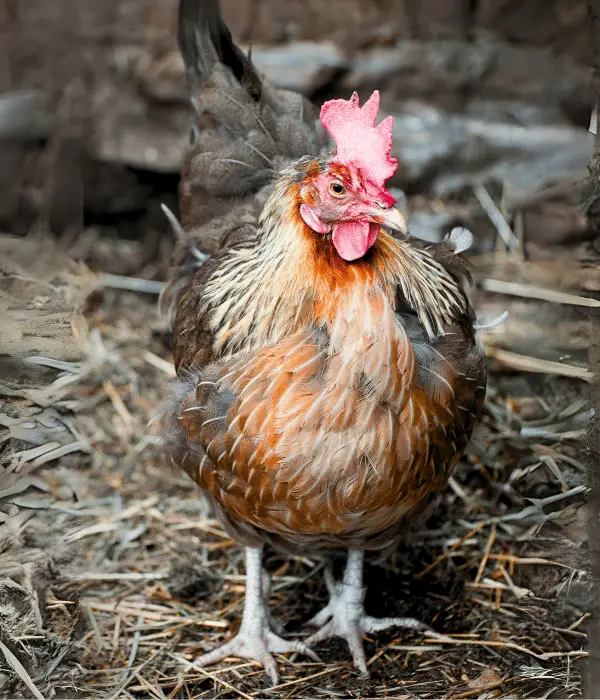
The Dorking chicken is an old breed. It comes from the United Kingdom. Its history may go back to Roman times.
The name of this chicken comes from the town of Dorking in Surrey, England. They are one of the popular dual-purpose chicken breeds.
Dorking hens lay about 170 to 190 eggs per year. The eggs are white or lightly tinted.
These broody chickens love to sit on their eggs and raise their chicks. They are good mothers.
With proper care, Dorking chickens live 6 to 8 years. Some live longer in good conditions.
Jersey Giants

The Jersey Giant chicken is a large and special kind of chicken. It came from the United States.
Two guys named John and Thomas Black made this breed in New Jersey in the late 1800s. At first, they wanted a big chicken to make meat instead of using turkeys.
Jersey Giants are the biggest breed of chicken in the whole United States. They are good for both meat and eggs.
A Jersey Giant hen can lay around 150 to 200 big brown eggs each year. They are good mothers, but their weight sometimes causes problems during brooding.
Their large size makes it hard for them to do that without breaking the eggs. Jersey Giants live longer than most chickens which is about 6 to 10 years.
This breed is calm and gentle. They are also useful for meat and eggs, and live a long time.
New Hampshire Reds
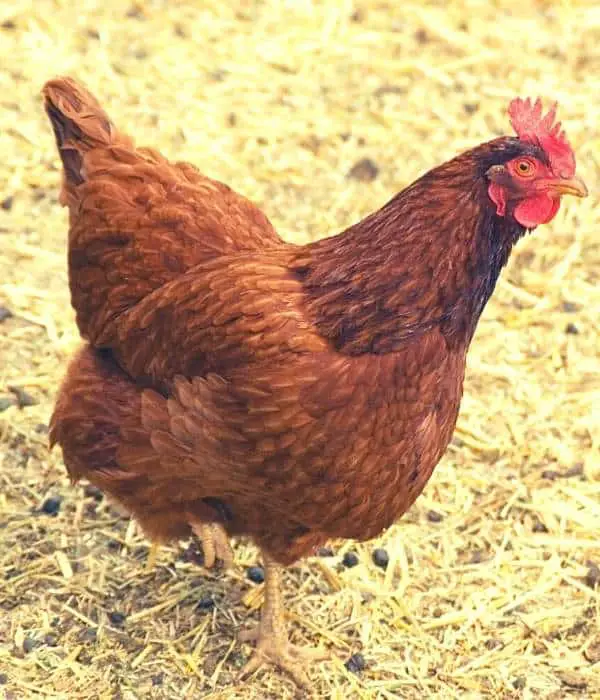
The New Hampshire Red chicken comes from New Hampshire. It began in the early 1900s. People bred Rhode Island Red chickens to make this breed.
This chicken breed is useful for both meat and eggs. The hens lay a lot of eggs. They lay about 200 to 280 eggs per year.
The eggs are big and brown. But the shade of brown can change based on the hen. Most of the New Hampshire Red hens want to sit on eggs and hatch them.
New Hampshire Red chickens can live for 5 to 8 years on average. But they need good care and food.
Farmers and chicken fans like this breed. The chickens are hardy and can adapt well.
Buckeyes
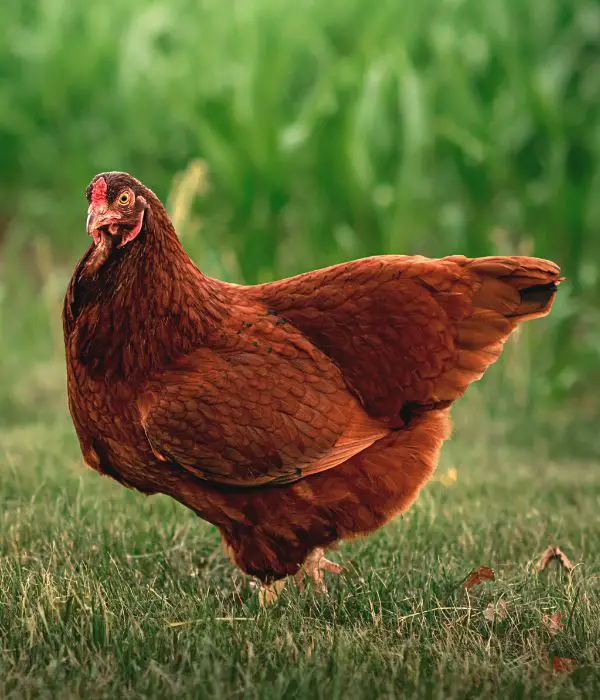
The Buckeye chicken is a special breed from the past. It began in Ohio in the late 1800s.
Nettie Metcalf developed this breed. Its feathers are a deep red color, like the Ohio Buckeye nut.
Farmers raise this chicken for meat and eggs. Buckeye chickens are strong and can handle cold weather. Their small combs don’t get frostbite easily.
Buckeyes are amazing broody chickens. They love to sit on their eggs and take care of their chicks. They lay between 150 to 200 brown eggs each year.
With good care, Buckeye chickens can live up to 10 years. They are good at finding their food and are friendly birds.
Cornish
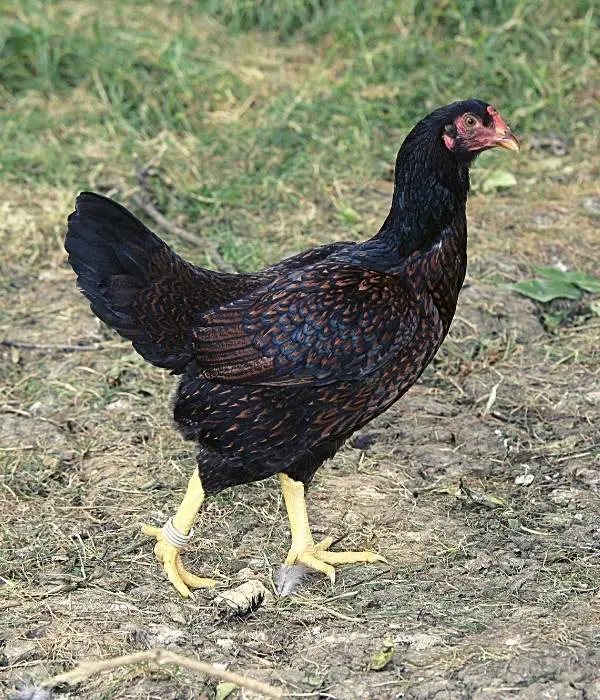
The Cornish chicken is a special breed. It was made in Cornwall, England in the 1800s.
Sir Walter Gilbert made it by breeding local game birds with Asian birds like the Aseel. He wanted a strong, muscular bird for cockfighting.
But the Cornish chicken wasn’t good at fighting. So instead, people started using it for meat because it was big and had lots of breast meat.
Cornish chicken has great meat quality, so it’s used a lot in the chicken meat industry. The males can weigh up to 10 pounds, and the females are a bit smaller.
They don’t lay many eggs, usually only 80 to 120 per year. The eggs are small to medium and cream to light brown in color.
Even though they don’t lay many eggs, Cornish hens really want to sit on eggs and raise baby chicks. But sometimes they accidentally break their eggs because they’re so big and heavy.
Cornish chickens don’t live as long as other breeds. They’re often processed for meat at 6-8 weeks old. But with good care, some can live for 5-7 years.
Houdans
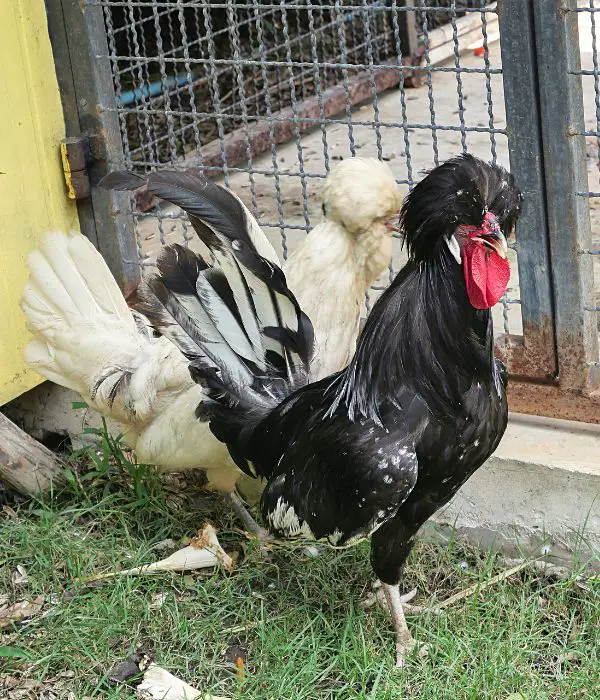
The Houdan chicken is an old French type of chicken. It is named after a town called Houdan, near Paris.
This chicken breed has an unusual look. It has feathers on its face, like a beard and muff. It also has a unique v-shaped comb on its head.
Plus, it has five toes on each foot instead of the usual four. The Houdan chicken is good for both meat and egg-laying.
The hens lay between 150 to 200 medium-sized eggs per year. They start laying eggs at around 6 months old. The eggs are white in color.
Some Houdan hens are good at sitting on the eggs to hatch them, while others are not. With good care, these chickens can live for 7 to 8 years, and sometimes even longer.
The Houdan chicken has a calm and friendly nature. Its special looks and nice personality make it a breed worth keeping around.
Malays
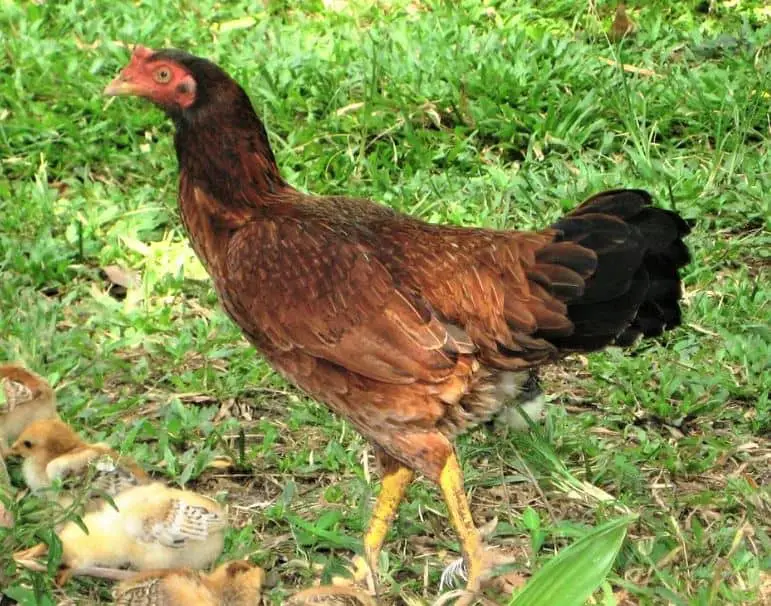
The Malay chicken has a long history and unique looks. It likely first came from Southeast Asia, especially Malaysia.
These birds have been around for thousands of years. But they were not well known until the 1830s when people brought them to England and then other parts of Europe and the United States.
People mostly keep them as fancy birds to look at, not for meat or eggs. They come in colors like black, red, and dark brown.
Malay hens do not lay a lot of eggs. Usually, they lay between 50 and 100 eggs per year. The eggs are medium to large in size, with colors from light brown to dark brown.
These Malay hens are one of the best broody chicken breeds. They are caring, and protective mothers. But their long legs may make regular nest boxes difficult.
With good care, Malay chickens can live 6 to 8 years. They are sturdy birds that can stay healthy for a relatively long time.
Barnevelders
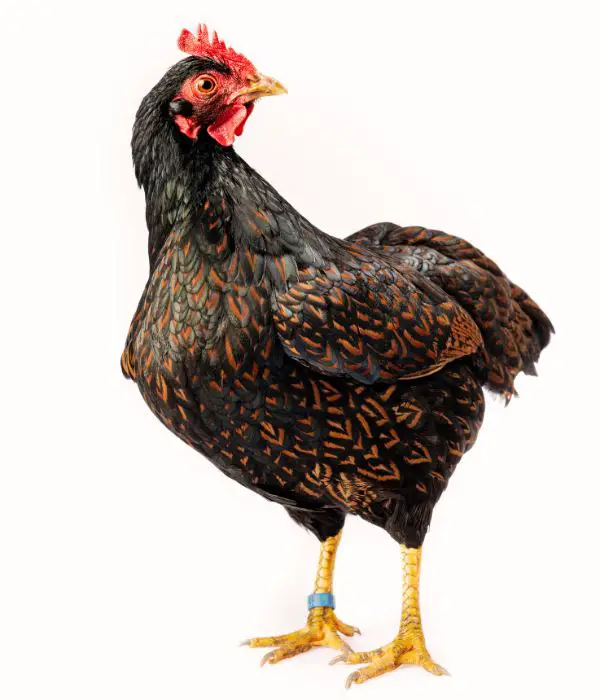
The Barnevelder chicken is a special breed from the Netherlands. It was made in the early 1900s in the town of Barneveld.
The breeders there mixed local Dutch chickens with Asian breeds like Langshan, Brahma, and Cochin. They wanted to make a chicken that laid high-quality brown eggs.
The Barnevelder is known for its beautiful feather pattern. Its black feathers have golden-brown edges.
Barnevelder hens are great egg layers. They usually lay 180-200 large, dark brown eggs each year. The eggs can be a deep mahogany color or a lighter brown shade.
Barnevelder hens are moderate to highly broody. They love to take care of their baby chicks.
With good care, Barnevelder chickens can live 8-10 years.
But their egg laying may slow down after the first few years. They are dual-purpose chickens. This means they are valued for both their eggs and their meat.
Belgian d’Uccles
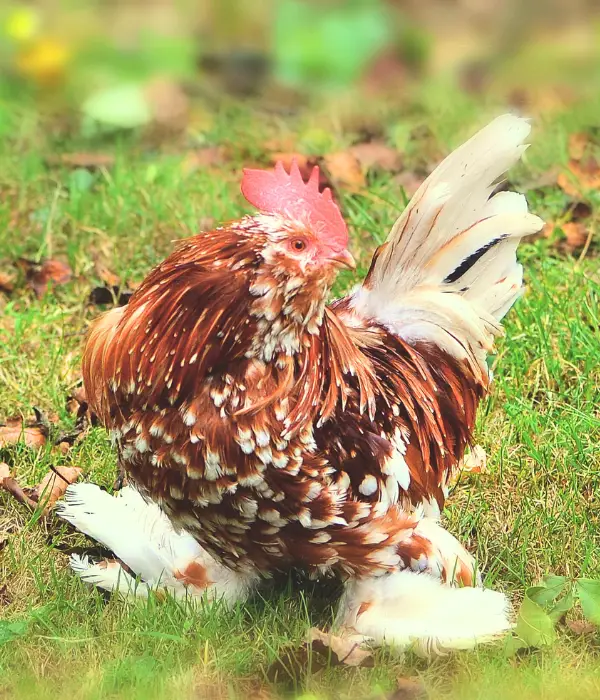
The Belgian d’Uccle is a small chicken breed from Belgium. It was made in the early 1900s in the town of Uccle.
It was created by a man named Michael Van Gelder. These chickens look different from other chickens. They have feathers on their legs, which look like boots.
They also have a beard of feathers on their face. The Belgian d’Uccle comes in many colors. The mille fleur color pattern is very pretty with its many shades.
A Belgian d’Uccle hen lays around 100 to 120 eggs each year. That’s about 2 or 3 eggs per week. The eggs are small and white or cream in color.
Belgian d’Uccles are one of the best bantam broody chicken breeds. They are good mothers who take care of their chicks.
These chickens usually live 5 to 8 years. Their life span depends on how well they are cared for and their health.
Old English Game
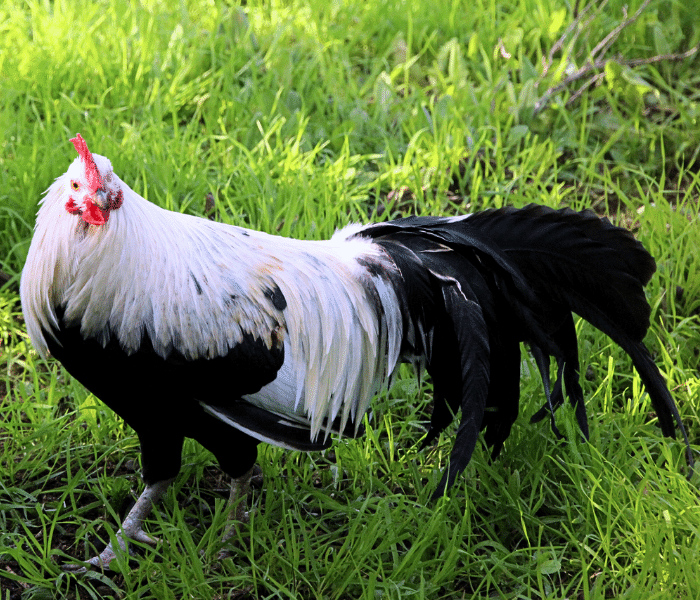
The Old English Game chicken is a breed with an important past. It comes from fighting cocks brought to Britain by the Romans a very long time ago.
These chickens used to be in cockfights. People thought they were brave and strong fighters.
However, cockfighting was stopped in England in 1849. But people still liked the Old English Game chicken for its looks and spirit. They started showing the chickens at exhibitions.
The Old English Game chicken has strong muscles, wide shoulders, and shiny, tight feathers.
Their feathers can be black, silver duckwing, wheaten, or crele – all very beautiful colors. Old English Game chicken live around 10-15 years.
The hens do not lay a lot of eggs, only about 160-180 per year. The eggs are small to medium and often have a cream color. But the hens are good at sitting on their eggs and being good mothers.
Pekin Bantams
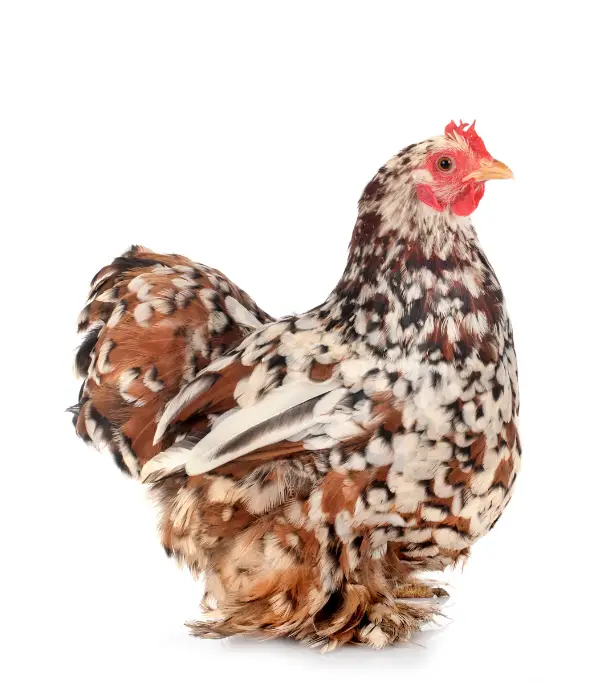
The Pekin Bantam is a small and cute chicken breed. It came from the city of Beijing in China a long time ago.
Some say British soldiers brought these birds to Europe around 1860 during a war with China. There are stories that the birds were a gift for Queen Victoria.
Then, people started breeding the Pekins we know today. Pekin Bantams are true bantams, which means they have no larger chicken counterparts.
They are round in shape, stand upright, and have lots of feathers, even on their feet.
Pekin Bantams do not lay many eggs. They usually produce 100-150 small to medium eggs per year, with white or cream-colored eggs.
These Peckin are one of the best broody chicken breeds love to sit on their eggs and hatch them. They often act like great mother hens, so other breeds sometimes use them to hatch their eggs too.
A Pekin Bantam chicken usually lives for 5-8 years. With good care, some may live up to 10 years or more.
People like keeping Pekin Bantams because they are friendly and look unique. Families and chicken lovers enjoy having these cute little birds around.
Scots Dumpy
The Scots Dumpy chicken is a breed with a long history. It comes from the Scottish Highlands.
This chicken has short legs and a stocky body. Records show it was around during the early Saxon times, over a thousand years ago.
Its waddling walk and unique looks make it special to chicken lovers. Scots Dumpy chickens are tough and can adapt to living in the rough Scottish landscape.
Scots Dumpies are useful for both meat and eggs. They lay around 180 eggs per year. The eggs are white or cream-colored.
The hens are one of the best broody chicken breeds in the world. Not only this, they are rare, and people wants to conserve the breed.
Scots Dumpies often live 8 to 10 years with good care. Their usefulness, looks, and personalities make them a favorite breed for chicken keepers.
Shamo
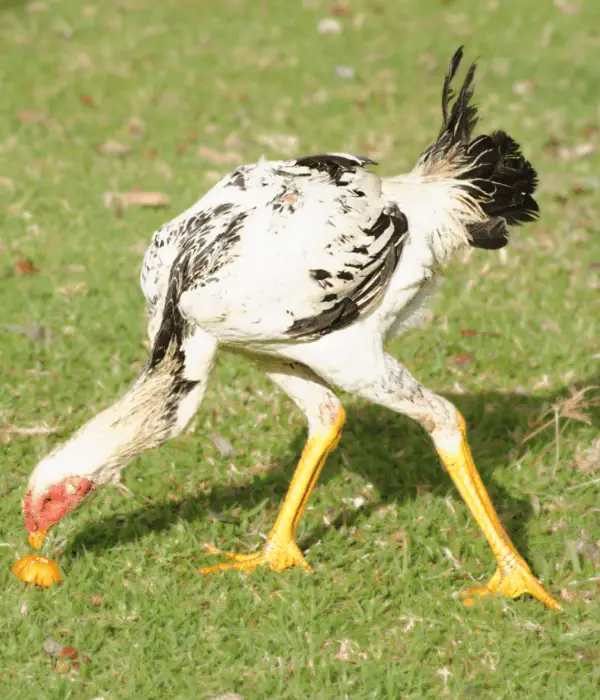
Shamo birds are a special type of chicken from Japan. They are big and stand up tall.
These Shamo chickens came from fighting birds brought from Thailand to Japan many years ago.
Over a long time, people chose the strongest and toughest Shamo chickens to breed.
Now, Shamo chickens are muscular and brave. In the past, people used them for cockfighting, but that is not allowed in most countries today.
Shamo hens don’t lay a lot of eggs. They usually lay around 100 to 150 eggs each year. The eggs are medium-sized and brown.
Shamo hens are one of the best broody chicken breeds. Some hens like to do this more than others.
Shamo chickens live a pretty long time for chickens. They usually live between 6 and 8 years.
Even today, Shamo chickens remind us of the special chicken breeds from Japanese culture. People admire how majestic and proud Shamo chickens look.
Chantecler
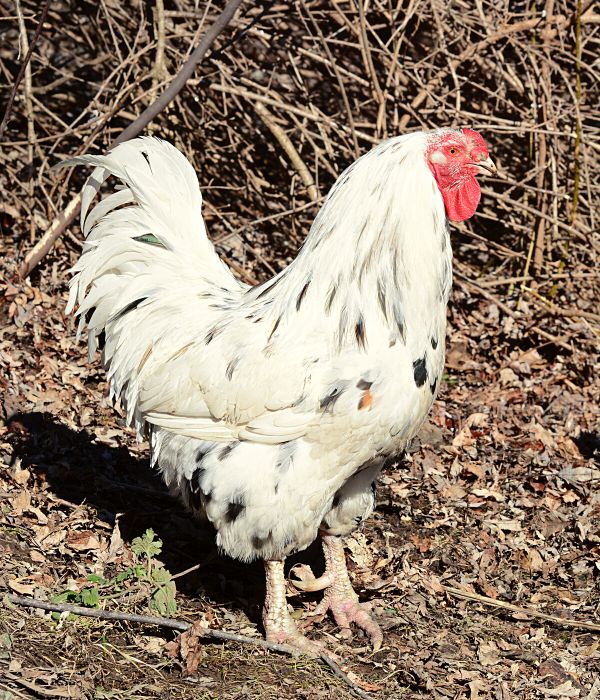
The Chantecler chicken is a special kind of chicken. It started in Canada many years ago. Some people in Quebec made this chicken in the early 1900s.
This chicken can deal with freezing weather very well. You can raise it for eggs and meat.
Chantecler chickens lay a good number of eggs every year, which is about 150 to 200 brown eggs. The eggs are light brown. Some even have a pinkish color.
These chickens don’t sit on their eggs too often. But when they do, they are good moms to their baby chicks. With good care, Chantecler chickens can live for 8 to 10 years.
That is a long time for a chicken! They are strong and can live in many places.
Chantecler are also friendly chickens. They are great for farms and homes that want a tough and nice chicken.
Good Broody Chicken Breeds
Below is a list of few chicken breeds which are good to average in their broodiness.
If high broody chicken breeds are not available in your state or region, you can choose one from the below list.
Welsummers
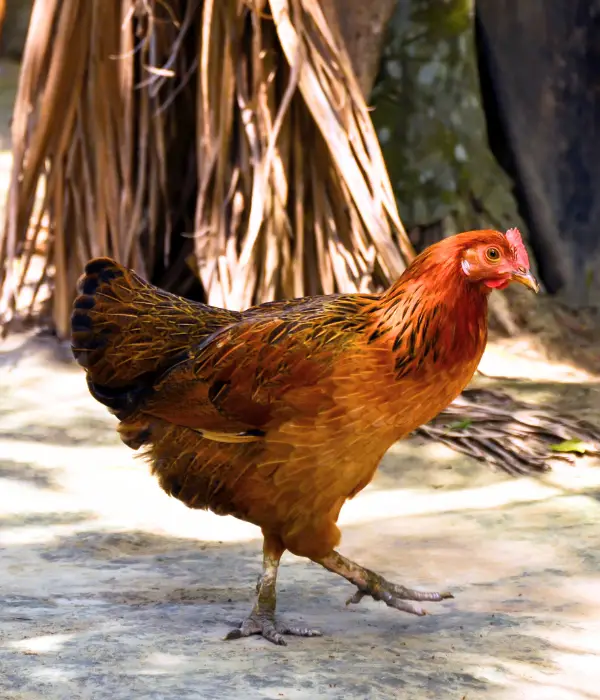
The Welsummer chicken is a type of bird. It comes from the Netherlands. This is a medium size breed which lay eggs and also be used for meat.
This breed is a mix of several local chickens. These include the Partridge Cochin, Partridge Wyandotte, Partridge Leghorn, Barnevelder, and Rhode Island Red. The Welsummer was first shown at a bird event in 1921 in The Hague.
Welsummers have beautiful reddish-brown feathers with black and gold colors. They are known for laying large, dark brown eggs with speckles on them.
Welsummer chickens are friendly birds. They like to explore and find food. They can live in many types of environments. A Welsummer hen usually lays around 160 to 200 eggs per year. Some may even lay up to 250 eggs.
The eggs are a deep brown color, often terracotta or mahogany. They have varying dark spots on them.
Welsummer hens are broody but seasonally. This means they sit on their eggs to hatch them mostly during spring.
Welsummer chickens usually live for 5 to 8 years. With good care, some may live even longer than that.
Dominiques
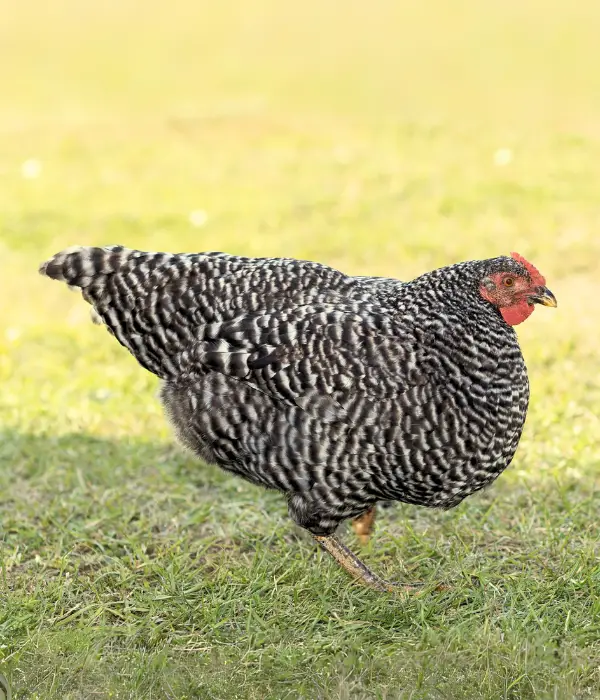
The Dominique hen is one of the oldest birds in the United States. No one knows where it came from. Some say it came with people from Europe a long time ago.
Others say it started in an old French colony. The Dominique hen has a neat pattern. Its feathers are black and white, like a hawk.
This pattern helps hide the bird from hungry animals. Dominique hens are good for eggs and meat. They lay a lot of eggs each year, around 230 to 275.
The eggs are light brown or dark brown. Dominique hens are good mothers. They go broody occasionally.
These hens can live for 6 to 8 years if you take good care of them. They don’t mind the weather much and are friendly birds.
Many people with small farms or who like chickens choose to have Dominique hens.
Rhode Island Reds
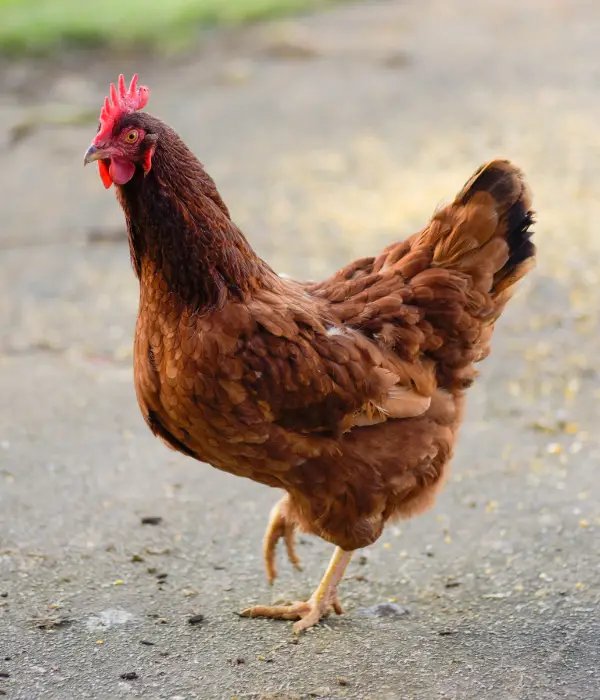
The Rhode Island Red chicken is a hardy bird. It came from Rhode Island and Massachusetts in the late 1800s.
Farmers crossed birds from the East like the Malay with Leghorn chickens from Italy. This created the Rhode Island Red’s deep red feathers.
Rhode Island Reds are good for both meat and eggs. People also show them at fairs and competitions.
The RIR hens lay a lot of eggs – around 200 to 300 brown eggs each year. The eggs are medium to large and range from light to dark brown.
Even though they lay many eggs, but average broody hens. Only 50 percent of the hen flocks like to sit on their eggs, only if raised in free-range.
Rhode Island Reds live a long time, regularly 5 to 8 years. With great care, they can even live 10 years or more.
They can live so long because they are tough birds that can adapt to different environments. Both new and experienced chicken owners like having Rhode Island Reds.
Plymouth Rocks
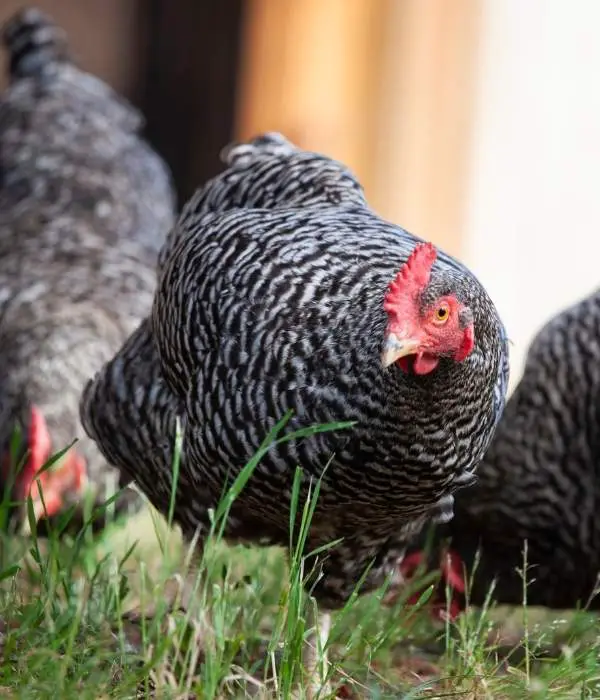
The Plymouth Rock chicken is a special bird. It was made in the United States a long time ago. It is good for getting both meat and eggs.
We can see this kind of chicken in Massachusetts in the 1800s. It was very common in the United States in the early 1900s. The Plymouth Rock chicken has stripes on its feathers.
These chickens are strong and easy to take care of. They are also good at sitting on eggs to hatch them. The Plymouth Rock chickens lay a lot of brown eggs every year.
In fact, they lay about 200 eggs in one year. This means they give us around 4 eggs each week. Their eggs are light to medium brown in color.
The hens of this breed often want to sit on the eggs to hatch them. They like to take care of their baby chicks. Plymouth Rock chickens usually live for 6 to 8 years.
But with good care, some of them can live up to 10 or 12 years. These chickens are easy to manage and very friendly.
They also give us a lot of eggs and meat. That is why many people who raise chickens like to have Plymouth Rock chickens.
Australorps
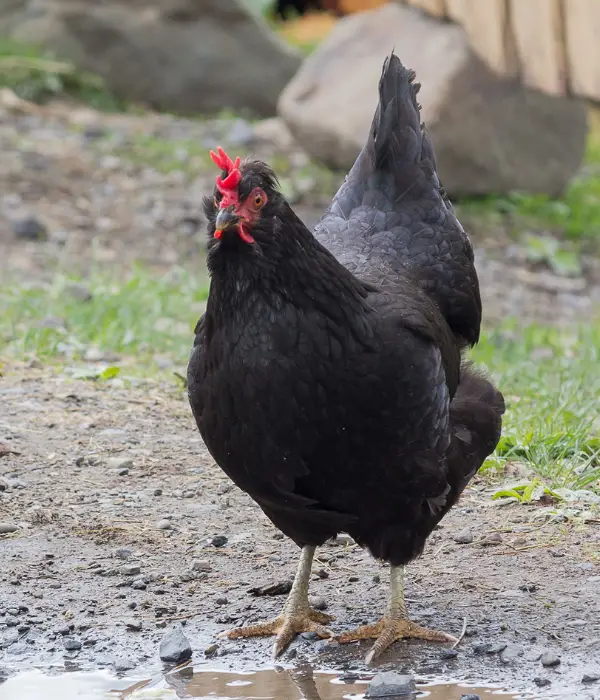
The Australorp is a chicken breed from Australia. It is known for laying many eggs and providing good meat. This breed was made in the early 1900s.
It was made by mixing Black Orpington chickens from England with Rhode Island Reds, Minorcas, White Leghorns, and Langshans. The name ‘Australorp’ comes from ‘Australia’ and ‘Orpington’.
Australorps are excellent at laying eggs. Hens can lay around 250 to 300 eggs each year.
The eggs are light brown and sometimes have a pinkish color. The breed can get broody, but not too much. This means they are good mothers when they choose to sit on their eggs.
Australorps are strong chickens that can live for 6 to 10 years if taken care of well. They can live in many different conditions, which helps them live longer.
They are good chickens for farms and homes around the world. Australorps are calm and friendly, making them good for families and new chicken owners.
They have striking black feathers that shine green in the sunlight. Australorps are useful and beautiful chickens that are good for shows and farms.
Langshans
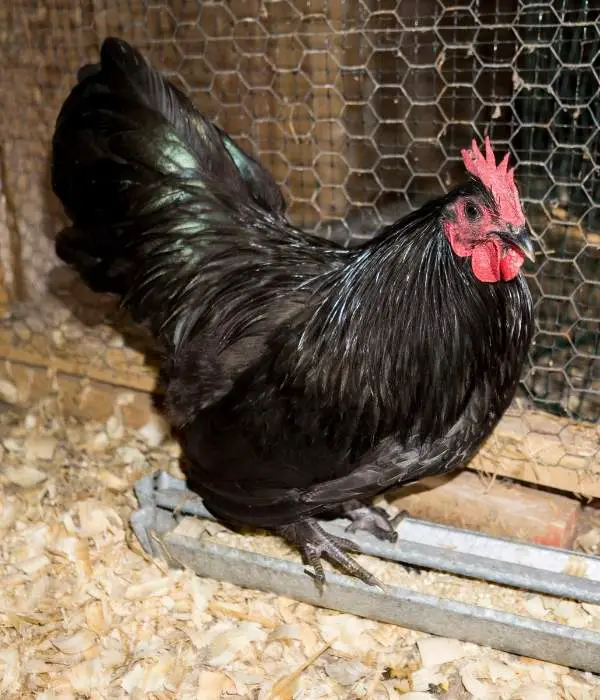
Langshan chickens come from a place near a big river in China called Yangtze River. They have nice black feathers and white skin.
People first brought this chicken type to Western countries in the 1870s. Langshan chickens are useful for both meat and eggs.
These chickens look elegant with long necks and tails. They can live in different weather. Langshan chickens are tough birds that are friendly and calm. That’s why many people who keep chickens like having Langshans.
Langshan hens lay many eggs each year, around 150 to 200. Every week, they lay 3 or 4 big eggs.
These eggs have a unique color, from middle to dark brown. Sometimes the eggs have a light purple color too, which makes them special.
Langshan hens sometimes want to sit on their eggs and hatch them. When they do, they take good care of their baby chicks after they hatch.
With proper care and a good place to live, Langshan chickens can live 6 to 8 years. Their long life shows how strong and healthy they are when cared for well.
Yokohama
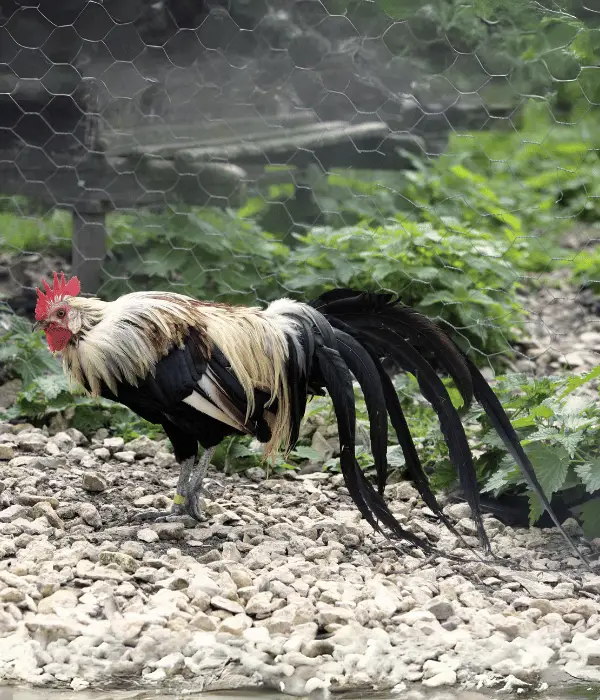
The Yokohama chicken is a German breed. It has long, flowing tail feathers that make it look cool. It came from Japan in the 1800s.
People brought fancy birds from Japan to Europe back then. Yokohama chickens are kept as pets more than for eggs or meat. They look great with their fancy feathers and color
patterns. Some have white feathers and others have red feathers on their backs. Yokohama hens don’t lay many eggs.
They only lay around 80 to 100 small or medium eggs each year. The eggs are white or cream colored.
Yokohama hens are late broody hens, they go broody after laying 12–16 eggs. With good care, Yokohama chickens can live 6 to 8 years on average.
But some may live longer or shorter based on where they live and their genes. People like Yokohama chickens because they are pretty birds to look at, not because they lay tons of eggs or provide lots of meat.
Broody Hen Vs Incubator Egg Hatching
Raising baby chicks from eggs is an exciting adventure. You can let a mother hen do the work with her natural warmth and care.
You can also use an incubator to hatch eggs without a hen. Both ways have their pros and cons.
A broody hen is a mom who wants to sit on eggs and hatch them. She keeps the eggs warm and turns them gently with her body.
Her chicks will learn important skills from her when they hatch. However, hens don’t always want to be moms, and they can only hatch a few eggs at a time.
An incubator is a box with a heater and turner that keeps eggs at just the right temperature. You can hatch many eggs at once in an incubator.
You can also hatch eggs any time of year, not just when hens are broody. But chicks hatched in an incubator don’t have a mother hen to teach them. And incubators cost money to buy and run.
Choosing between a broody hen or an incubator depends on a few things. Some chicken breeds, like Cochins and Silkies, tend to go broody more often than others.
The time of year also matters, since hens usually get broody in spring and summer. Think about why you want to hatch chicks, too.
A broody hen is nice for just a few chicks as pets. But an incubator may work better if you need to hatch many chicks for a farm or business.
Gathering and keeping eggs for hatching needs care. You should take eggs from healthy hens. The eggs should be the right size and not too dirty.
A hen sitting on her nest can care for it. But if using an incubator, you must store the eggs right before starting the machine. This keeps the eggs ready to hatch.
Both ways have good and bad parts. A hen sitting on eggs is natural and free. But she can only sit on a few eggs at once, and you can’t choose when she does it.
An incubator lets you pick when to hatch many eggs. But it can’t give the care a mother hen gives. Think about what works best for your chickens. With planning, either way can give you cute new chicks.
List of 10+ Least Broody Chicken Breeds
Sure, here’s a list of chicken breeds that are less prone to going broody:
- Leghorn
- Ancona
- Lakenvelder
- Minorca
- Easter Egger (not a pure breed, but a cross, often less inclined to broodiness)
- Hamburg
- Fayoumi
- Andalusian
- California White
- Campine
- Catalana
- Cubalaya
- Buttercup
- Kadaknath
You require an incubator to hatch the eggs of these least broody chicken breeds if you want to raise them. Otherwise, they will keep laying eggs.
I hope you liked this list of best, good and least broody chickens.
